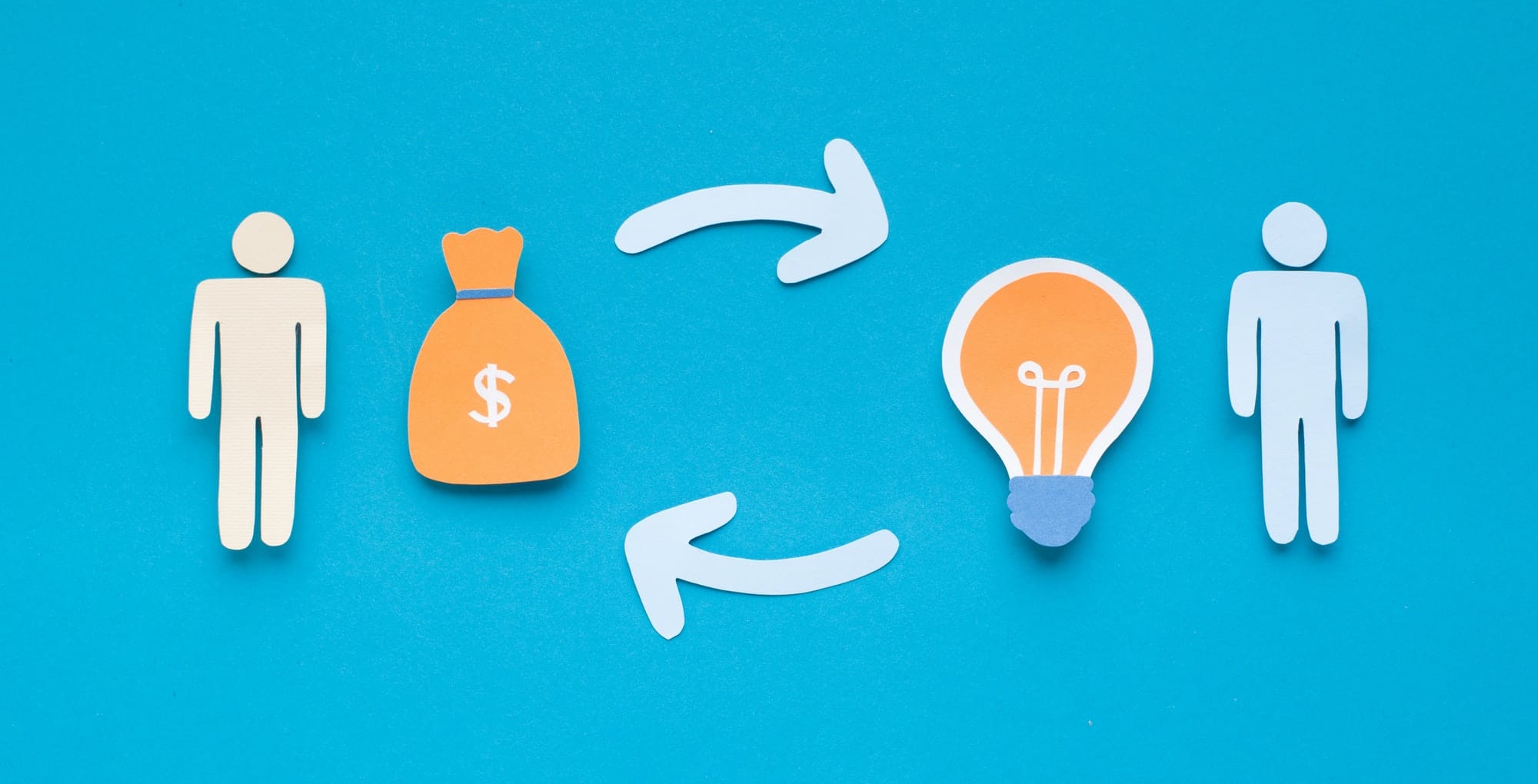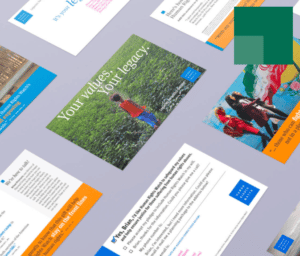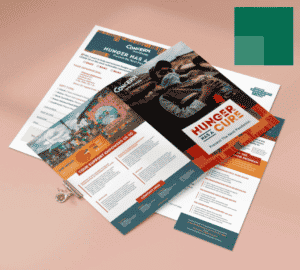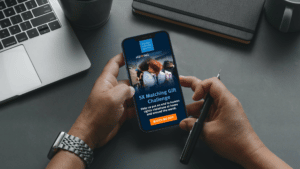The Most Powerful Pipeline: Building Major Giving Opportunities Out of Your Annual Fund

We’ve all witnessed the silos between annual fund and major gift programs.
We’ve all heard the myth that major gifts come only from peer networking.
But we all know: One of the best pipelines for major gift prospects and major giving is your direct mail and digital annual fund.
From years of analysis across the nonprofit sector, Target Analytics has shown that $1,000 gifts are most frequently given after a donor has already been active in an organization’s file for at least 7 years but giving at a lower level. Those same individuals are substantially more likely to make a major gift than those who have not had the same donor journey — 900% more likely, in fact.
This is not to say that building organic networks through existing major donors, Board members or other highly connected ambassadors is not an important strategy for major giving. However, it is to say that neglecting the potential for major gifts to come out of the rank-and-file donor base is a mistake.
Begin by Identifying Potential in Your Donor Base

Identifying potential opportunities in your donor base is the first steps you can take to build a successful major giving opportunity. If you aren’t sure where to start with your current base, a good first step is to a run a Major Donor Probability Scoring of your file. This will identify donors who demonstrate a high-level of dedication to your cause and likelihood of increased giving, combining:
- Donor history, such as the number or total amount of gifts given.
- Psychographic and demographic data.
- Other third-party transactional data.
It’s possible to purchase valuable information about your donors and add it to your file — this is called a data append, and it may include:
- Wealth indicators or estimates, looking at public assets like real estate values.
- Propensity or likelihood to give, based upon earlier charitable giving behavior.
- Other demographic details useful to donor profiles, such as age, gender or the presence of children.
We approach this with our data science team and partners, utilizing machine-learning algorithms to rank donors and identify those who show a higher propensity and capacity to give. This includes confidence indicators for a donor having a Donor-Advised Fund or being capable of making additional and/or larger gifts. When the file is returned, the top 20%, up to 100,000 names, will have assigned major gift capacity and propensity scores to help refine your targets. The higher the score, the more likely the donor is to give — it is as simple as that!
Qualify Your Donors to Build a Fully Functional Major Gift Portfolio
Despite the possible hundreds or even thousands of high-scoring names returned from your database, not all these individuals are primed to be a major donor to your organization. This group is your starting prospect pool — and now, equipped with new data, the next step is to qualify your major donor leads.
What is Qualification?
Qualifying helps determine if the donors in your prospect pool in fact want to connect with you and your organization through personal, one-to-one interactions. For most donors, this just isn’t their preferred method of engaging with nonprofits.
What is most important is that you respect your donor’s preferences, presenting them with an opportunity to have a dedicated relationship manager but not forcing it. If your donor is happiest staying in an annual fund file and responding to direct mail or email marketing, keep them in that stream and employ other techniques to incentivize increased giving.
The Basics of Qualifying Your Major Giving Prospect Pool
To go about qualifying your prospect pool, prepare a calendar of outreach for each donor that combines, at a minimum:
- An introductory letter to explain your role with the organization.
- A follow up phone call timed about one week after sending the letter, so that your initial outreach is fresh in the donor’s mind. Ensuring that you have an updated profile of the donor on hand, use the call to establish a personal rapport as you inquire more about the donor’s interests and motivations in supporting the organization.
- A follow up note of thanks, possibly paired with a story and photo from your programs to help underscore their impact or reflecting something discussed during the call.
Of course, it may not always happen so smoothly, and you may need a few attempts to successfully connect with a donor, particularly if they are on vacation or juggling other personal matters. You may also want to use other tools to gain information or responses from donors, like a survey. If the donor continues to be non-responsive — then that in itself is a response, and you should not continue to push the envelope.
Finale Your Major Gift Portfolio
After connecting with a donor that you feel confident is interested ongoing personal cultivation, move them to your “qualified portfolio”. Ideally, this portfolio will grow to 125 to 150 names, although this can be flexible pending the overall value of the caseload — the higher the value, the more time to manage and so the smaller the portfolio — as well as other duties that you may have, in the event that you are a fundraiser wearing many hats. A good rule of thumb is to plan on moving one donor into your qualified portfolio for every 4 to 5 caseload donors.
Planning for Steady Cultivation — Including (Direct) Mail
Once a donor has made their way into your qualified portfolio, it’s time to plan for continued cultivation — deepening the relationship over time, learning more about your donor’s passions and interests, creating meaningful experiences for them with your organization and building to targeted, thoughtful asks that respond to their philanthropic priorities. This means building personalized calendars for each donor, making sure that you have at least one meaningful touch point scheduled each month. Touch points can include:
- Phone calls or video chats with you and other members of your organization.
- In-person or virtual site visits.
- Tailored impact reports, reviewing previous giving and letting the donor know what was made possible because of their generosity.
- Personalized notes, particularly around birthdays or significant milestones, as well as sharing articles that may tie to your donor’s interests (both related to the organization, as well as their personal interests).
This is just a starting point, and opportunities for meaningful cultivation are only limited by your imagination. If you are not equipped to manage the workload of cultivating your portfolio, donors should absolutely be left in the annual fund pool, because you will lose out on valuable revenues if these donors are stranded in a fundraising no-man’s land.
Including Target Asks in Your Timeline
In this process, you should also assign a target annual gift amount and plan for the critical ask touch points in your calendar. This may involve looking to their previous timeline of gift-making, to determine the most appropriate month for soliciting a gift. In setting a target ask amount, consider both their history of giving, upgrade behavior, capacity and specific project needs related to their interests.
Also keep in mind that there can be essential pre-solicitation steps to take, like sharing a specific proposal for review ahead of the ask conversation. These important steps should also be included in your calendar. (Planning for effective donor meetings, cultivation and solicitations is a lengthy topic that will be covered in later blog editions — please check back!)
Leveraging Mail in Your Cultivation Calendar
An important note is that mail, including direct mail, can be a valuable strategy in your overall planning, even for major donors. If you have a set appeal and communications calendar, mark the drop dates in your plan so that you can pull specific materials to use for major donors as well. This may include sharing a newsletter with a personalized cover letter or pulling elements from an appeal that touch on a particular topic of interest for the donor.
Perhaps even more surprisingly, it can include receiving standard appeal letters from time to time — provided that a donor has not specifically requested removal from the file, or if the relationship is so far along and developed that the only way that the donor makes contributions any more is through personalized solicitation. Of course, this should not mean that you step back and let direct mail do all your asking — in that case, the donor should no longer be considered part of your portfolio at all.
Mid-Level Giving is a Transition and a Destination
We have covered topics in mid-level giving before, including information on the fundamentals of building a mid-level program and planning for a mid-level program launch. If you are just introducing a mid-level giving program for the first time, I recommend those resources!
Your mid-level giving program is also important to supporting donor moves from the annual fund to major gifts program. Mid-level programs have that extra bit of personalization and targeted asks around upgraded support, so for a donor with capacity to give four-figure (and higher) gifts who is currently giving below $100 a year, the extra effort put forth in relationship building through a mid-level program can be a bridge to higher giving. This gradual means of deepening the connection between the donor and your organization can be less jarring than a donor going from lower annual fund contributions and communications to the hyper-drive relationship building of major gifts. (The materials produced for a mid-level program can also be useful tools in major gifts cultivation planning, as discussed above.)
Investing in a strong infrastructure for mid-level giving is essential
In other cases, donors who have been scored as having a high probability for major giving may move into the mid-level giving range — and stay there. This could be the peak of their giving interests in your organization and mission, despite what their capacity indicators may suggest is ultimately possible. This is why investing in a strong infrastructure for mid-level giving is so essential, enabling you to maximize the value of these donors over time. It also underscores that you should monitor your mid-level audience closely to understand trends in donor moves, while not assuming that each mid-level donor is a major donor in waiting. Again, this is all about placing your donor, their interests and their preferences at the center of your fundraising process — providing a multitude of avenues for them to have the most meaningful relationship with your organization possible.
When splashy news stories come out to celebrate philanthropy from the likes of Mackenzie Scott, or local organizations announce the public phase of a campaign with lead principal gifts having already pushed them past their fundraising goal, it is natural to feel a twinge of envy and ask yourself, “How can we get so lucky, and find major gift revenues like that?” The good news is, you may not have to look very far!
If you’re ready to explore opportunities to build major gifts and a major giving strategy from within, I am here to talk!
Beyond supporting organizations through Major Donor Probability Scoring, we can:
- Target and design qualification processes, including drafting outreach materials and preparing call scripts or questions.
- Execute in-depth prospect research to build out donor profiles.
- Design personalized cultivation calendars to guide ongoing relationship management with donors.
- Lead training sessions and coaching to prepare for donor outreach.
- Develop and implement strategies to support donor cultivation, including in-person and virtual events, and campaign and communications development.
I can be reached at Lindsay@faircomny.com — please reach out at any time!




